Jaguars: Kings of the jungle, balancing the Amazon's rich biodiversity
- Nature Conservation
- Iconic Species
- Wildlife
- Mammals
- Brazil Cerrado & Atlantic Coast
- Southern America Realm
One Earth’s “Species of the Week” series highlights an iconic species that represents the unique biogeography of each of the 185 bioregions of the Earth.
Prowling the dense rainforests, tropical wetlands, and flooded grasslands of Central and South America is the iconic jaguar (Panthera onca), the biggest cat native to this side of the world.
As the third largest big cat globally, after tigers and lions, jaguars are distinctive not only for their size but also for their intricate spots, with a central dot, setting them apart from the pattern of their leopard cousins in Africa and Asia.
A vast American territory
Jaguars once ruled a vast territory stretching from central Argentina to the southwestern United States. However, since the 1880s, they have faced a perilous decline, losing more than half of their original habitat.
Today, their primary stronghold is the Amazon Basin, though smaller populations persist throughout Central America. These elusive cats thrive in tropical rainforests, moving like shadows among the trees, hunting for prey.

Jaguars are the iconic species of the Pantanal Flooded Grasslands & Dry Forests Bioregion (NT12), located in the Brazil Cerrado & Atlantic Coast subrealm of Southern America.
Size, weight, and the rare black panther
With a body length of up to 1.85 meters (6 ft 1 in) and a weight of up to 158 kilograms (348 lbs), jaguars are the largest cat species in the Americas. However, size and weight vary considerably depending on sex and location, with females being smaller.
Their characteristic marked coat features pale yellow to tan colored fur covered by spots that transition to rosettes on the sides. Although rare, jaguars can also have a completely black coat, with their pattern still visible. Blacked-coated jaguars and leopards are known as black panthers.
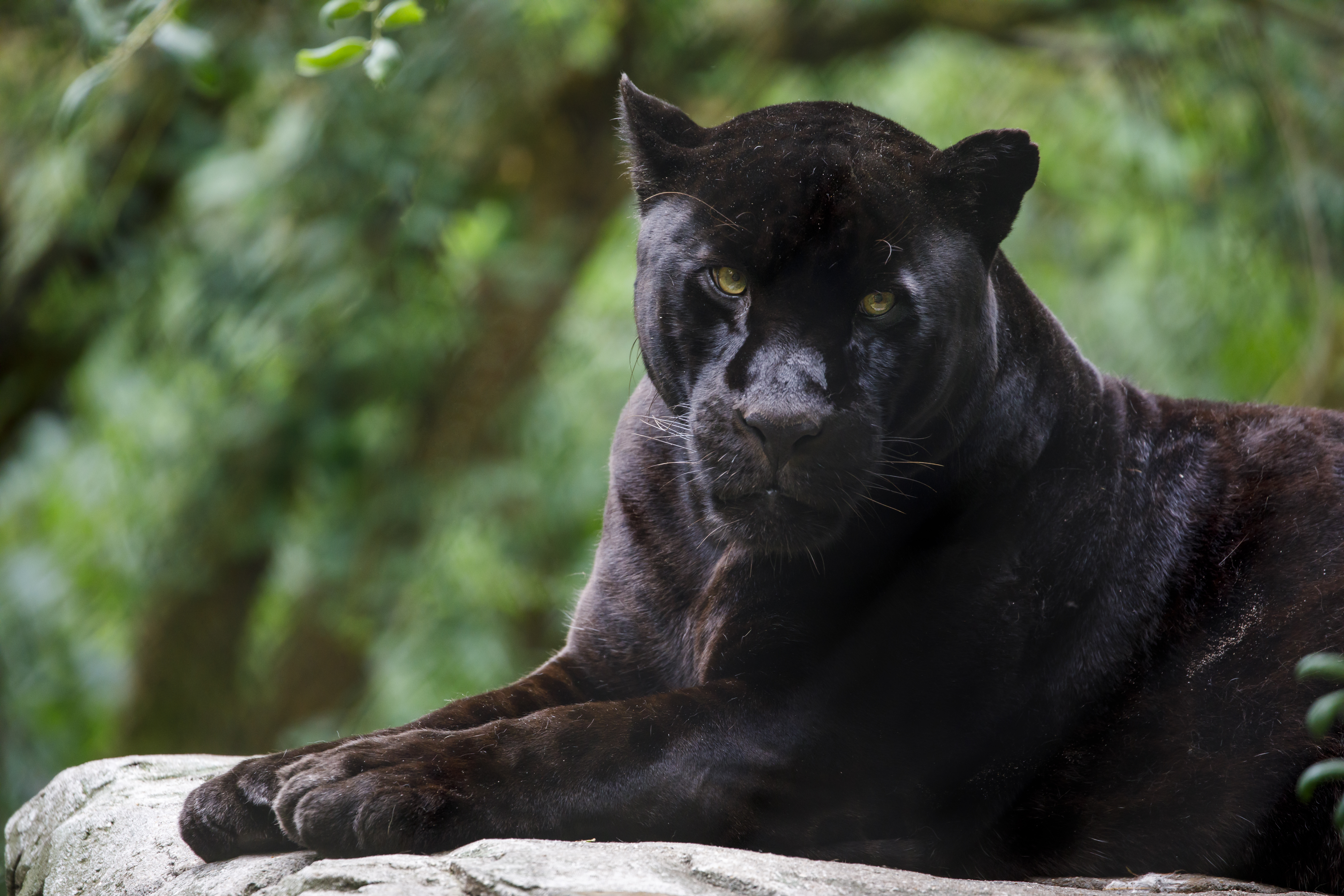
Closeup of a black jaguar. Image Credit: Edwin Butter, Envato Creative Commons.
The big cat who thrives in water
Unlike many of their feline counterparts, jaguars are not averse to water; in fact, they are skilled swimmers. This ability is critical to their role in the ecosystem, serving as a top predator in both terrestrial and marine environments.
Jaurgars eat deer, peccaries, capybaras, tapirs, and other land animals, as well as fish, turtles, and even caimans. Their powerful jaw sets them apart, allowing them to pierce through turtle and tortoise carapaces and mammalian skulls, which is their preferred and unusual hunting method: biting directly through the cranium between the ears to deliver a fatal blow to the brain.
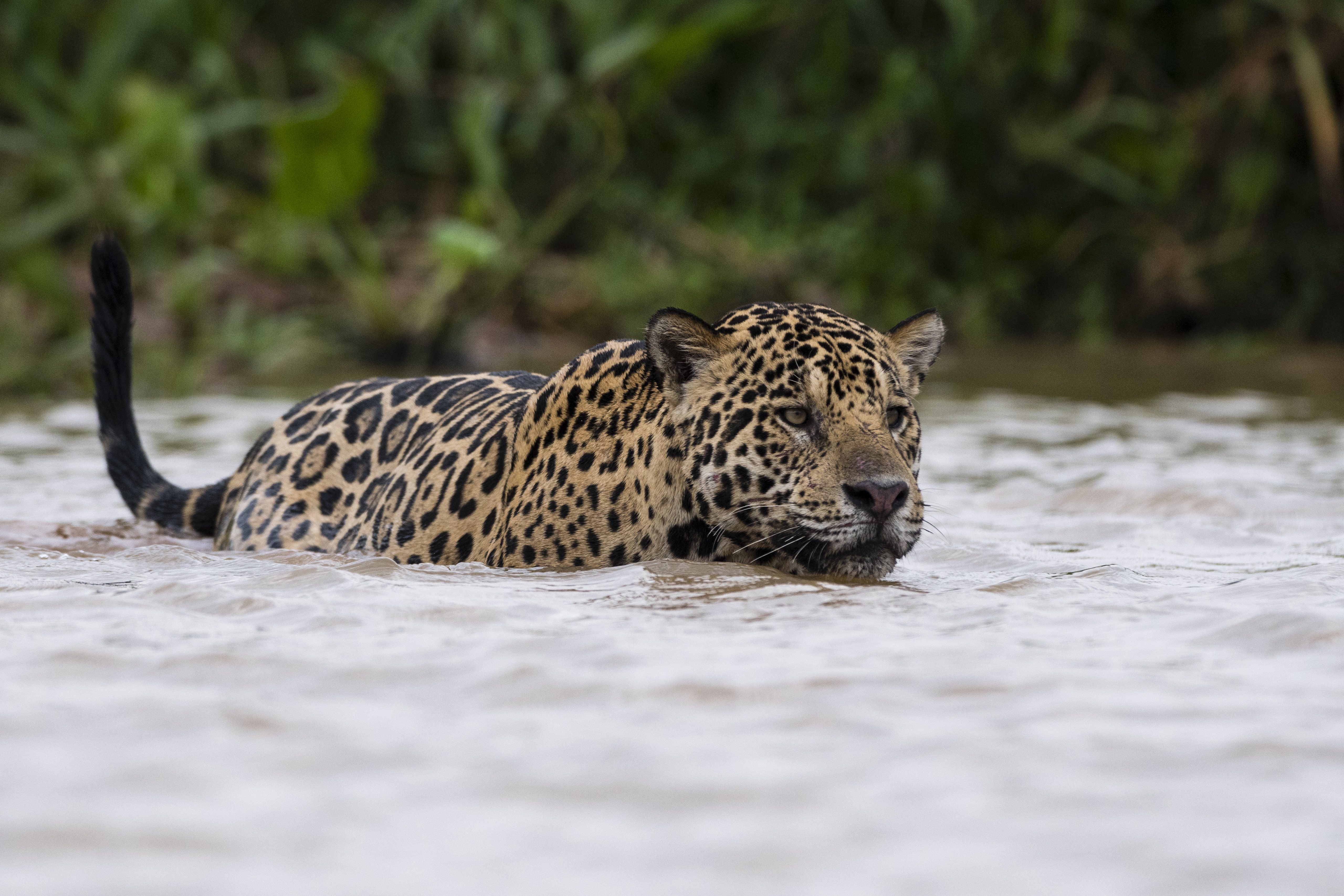
Jaguar walking into water in Pantanal, Mato Grosso, Brazil. Image Credit: Envato Creative Commons.
Solitary beings with protective mothers
Jaguars are solitary creatures, defining their territories through markings or clawing trees. Only females and cubs are seen together.
One to four cubs are born in a litter. The vulnerable cubs, blind and dependent, stay under the vigilant protection of their mother, who fiercely defends them from any potential threat, even the father. During these early years, young jaguars learn the art of hunting, forging a bond that lasts two or more years.
Powerful symbols in ancient civilizations
In the tapestry of pre-Columbian cultures, jaguars emerged as symbols of power and strength. Worshiped as gods, representations of these majestic cats adorned the art and artifacts of ancient South American civilizations.
To the Maya, the jaguar was believed to facilitate communication between the living and the dead and to protect the royal family. Several Maya rulers bore the name b’alam, the Mayan word for jaguar. Balam remains a common Maya surname.
The Aztecs formed an elite fighting class known as the Jaguar Warrior. In Aztec mythology, the jaguar was sacred to the powerful deities Tezcatlipoca and Tepeyollotl.

Jaguar head and Mayan temple pyramid of Kukulkan in Chichen Itza, Yucatan, Mexico. Image Credit: Diego Grandi, Envato Creative Commons.
The role of jaguars in Indigenous culture
Today, the jaguar continues to hold a special place in Indigenous cultures. In Ecuador, Waoranis believe jaguars have a paternal role in watching out for other species. Everything revolves around the jaguar; if it disappears, the rest of the animals and plants will follow.
Kichwas from the Amazon believed that there were only spirits without form at first; when they died, they came back as jaguars, the wisest and strongest of the animals.
The looming shadows of extinction
Despite their influential symbolism, jaguars face many dangers. Habitat fragmentation, fueled by rampant deforestation across South and Central America, is a pervasive threat.
As their territories shrink, jaguars face isolation, leading to inbreeding and local extinctions. The encroachment of grazing lands for agriculture poses another challenge, increasing the likelihood of human-wildlife conflict as jaguars turn to cattle for sustenance.
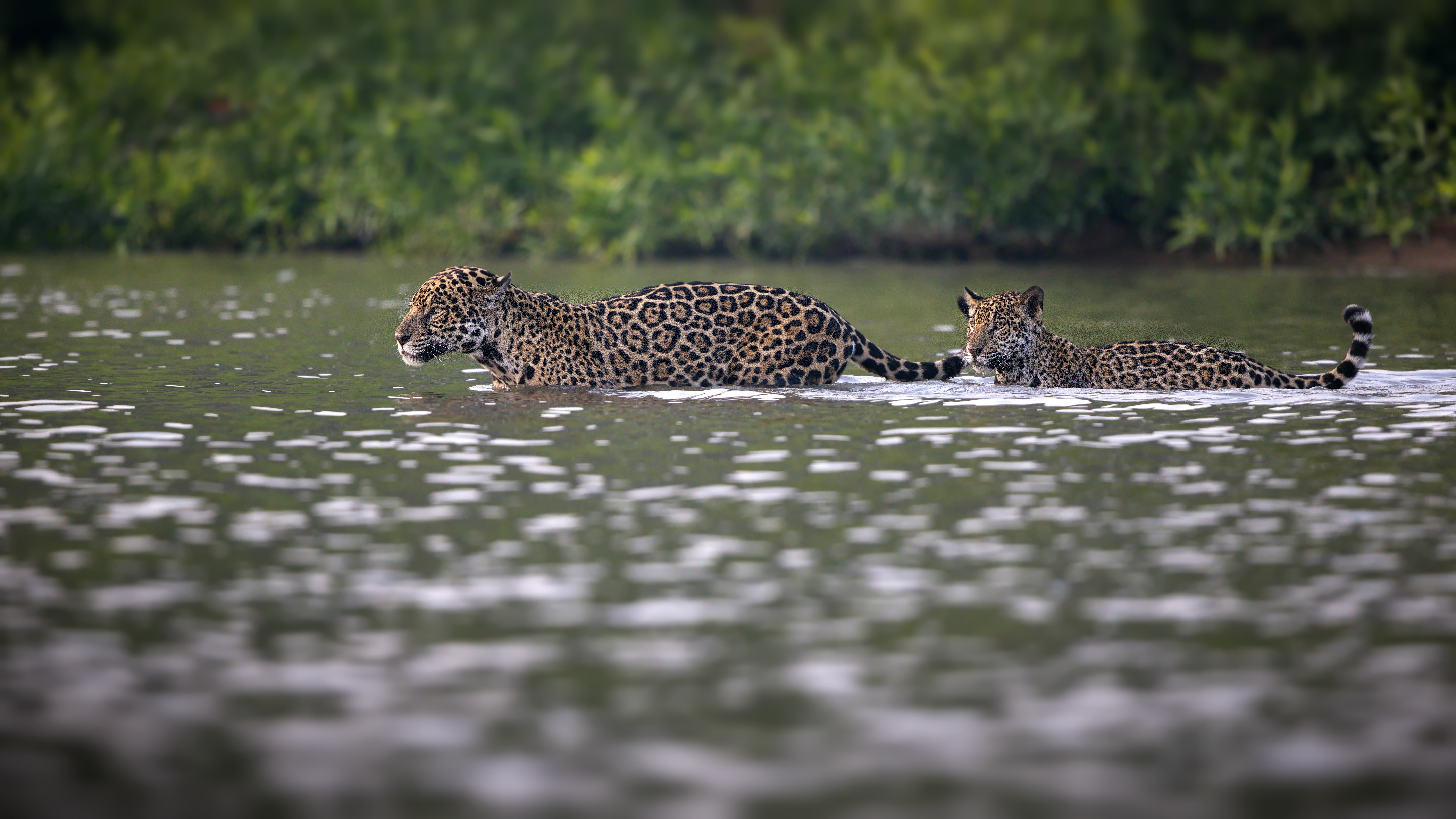
A jaguar mother and her cub. Image Credit: Envato Creative Commons.
Roaring back to life with international protections
Classified as near-threatened by the International Union for the Conservation of Nature, jaguars are not without guardians in the modern world. National protections span their range, and international agreements, like the Convention on International Trade in Endangered Species (CITES), prohibit the trade of jaguars. However, despite these measures, poaching remains a critical issue.
Connecting the dots: Corridor initiatives
Major efforts are underway to establish jaguar corridors, reconnecting isolated populations. Working with ranchers is another critical strategy, involving workshops that educate on more harmonious agricultural practices.
These efforts, championed by international NGOs and Indigenous groups, remain pivotal to securing the jaguar's future.
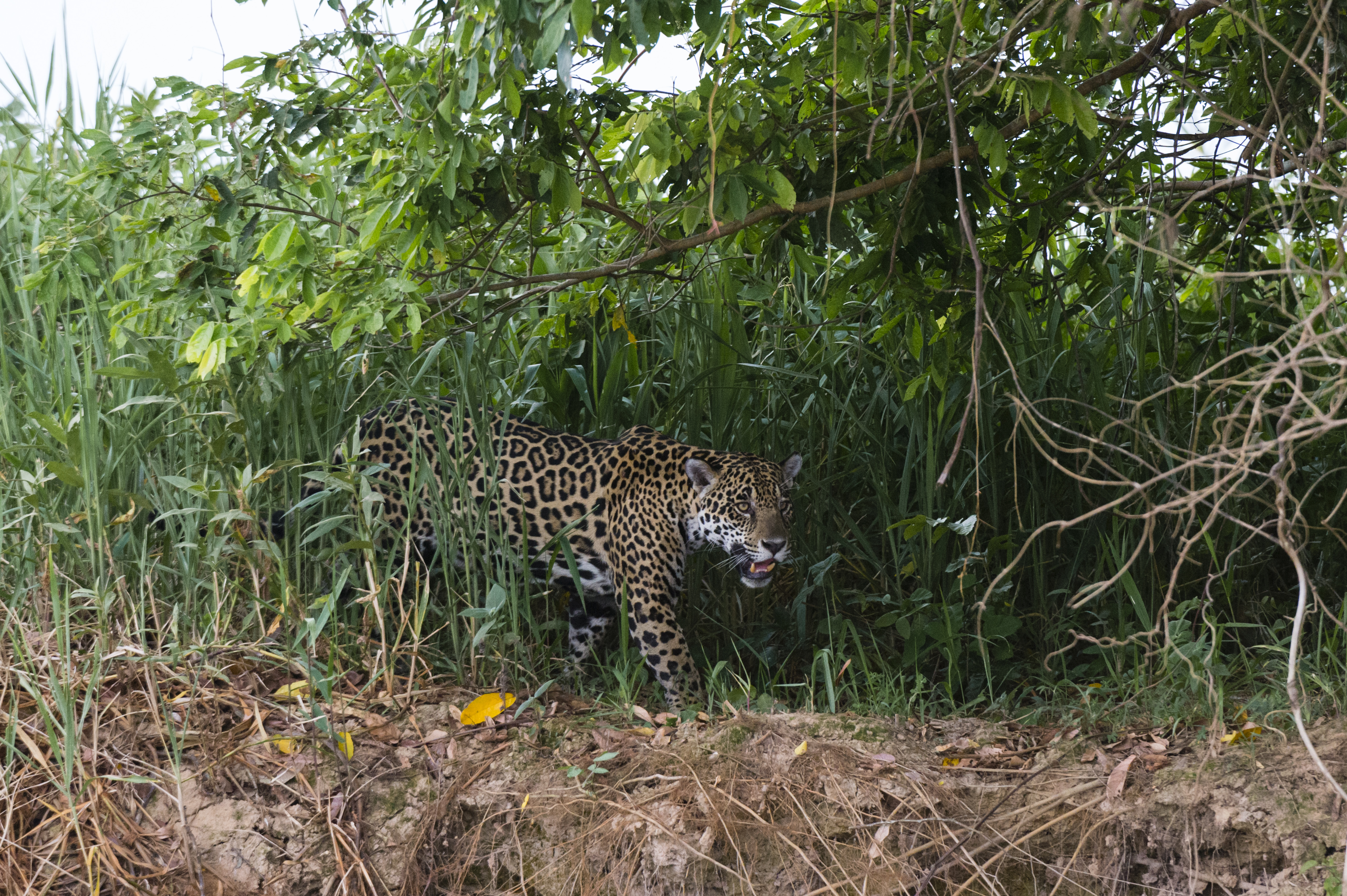
Jaguar prowling in the wetlands of Pantanal, Mato Grosso, Brazil. Image Credit: Envato Creative Commons.
A call to action to safeguard jaguars
The jaguar is not merely a symbol of the rainforest but a living guardian of this complex ecosystem. Our choices today will determine whether the jaguar will continue to roam through the lush canopies of the Amazon or become a myth for future generations.
Support Nature Conservation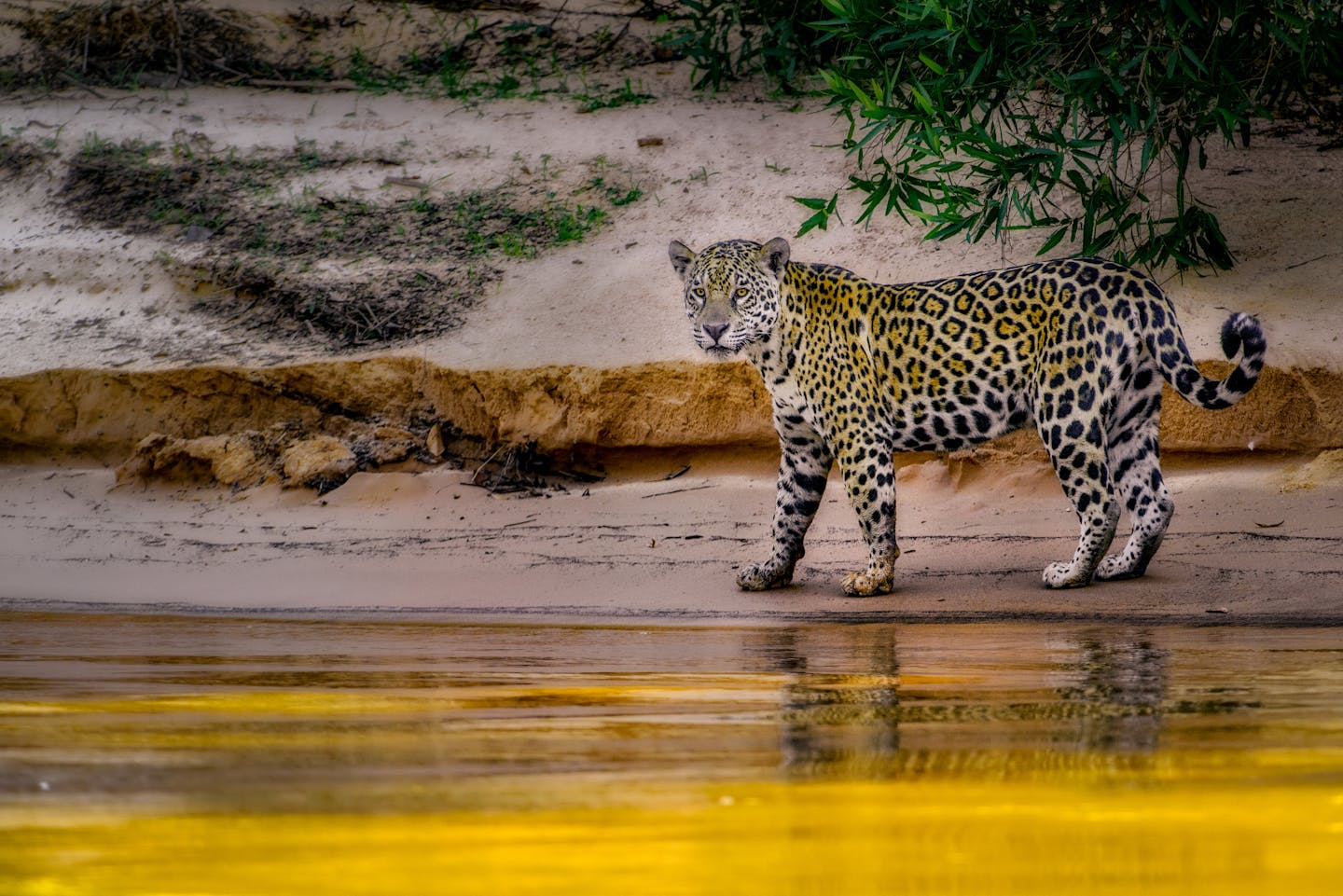

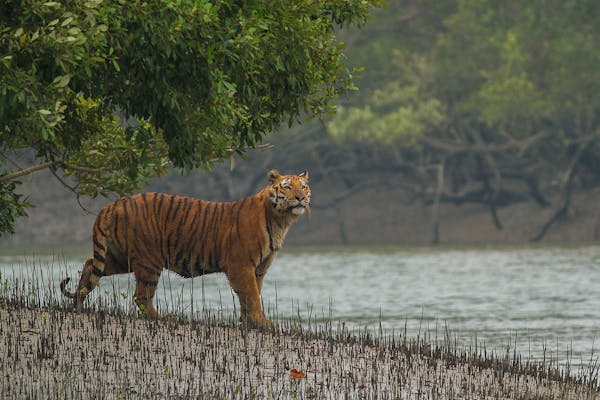
.png?auto=compress%2Cformat&h=600&w=600)

